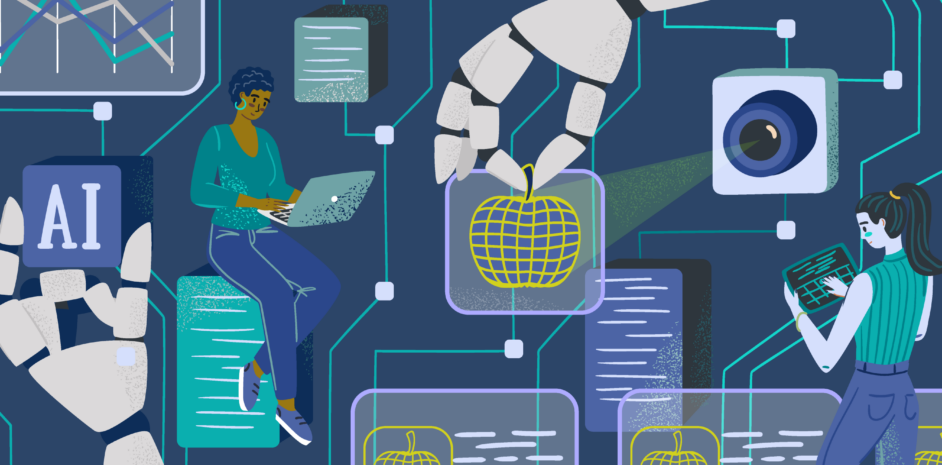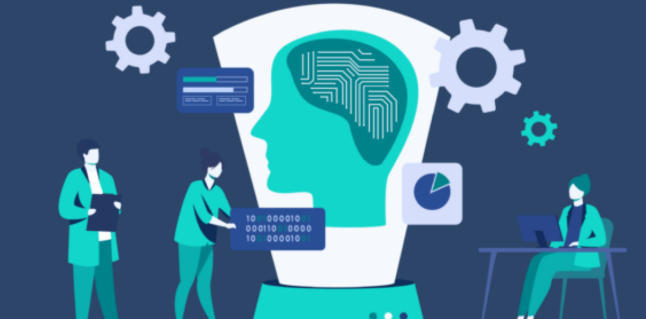Bias and Fairness in AI Systems: A Guide to Responsible AI for Enterprises
January 16, 2025
Key takeaways
- Just like humans, AI can be biased. LLMs and other types of AI models can output unfair or prejudiced answers. Mitigating this bias is crucial to explainable and responsible AI.
- Bias creeps in even with the best intentions. Unseen or unnoticed issues with training data are a common driver of biased results from AI models.
- Addressing AI bias and fairness requires constant vigilance. Enterprises should create processes and AI bias mitigation strategies to routinely audit and address bias issues in their AI solutions.
- SeekrFlow™ agentic data transformation helps overcome some of these bias and fairness challenges, allowing you to generate an AI-ready dataset from limited unbiased sources based on the ethical or industry principles you choose.
Why AI bias is bad for business
Does AI help remove human bias from tasks such as reviewing resumes and making hiring decisions, or make it worse?
In October 2024, a team of researchers studying AI bias and fairness at the University of Washington found that state-of-the-art LLMs from Mistral AI, Salesforce, and Contextual AI produced unfair hiring recommendations based merely on the names of the applicants reviewed. On average, the AI systems provided recommendations that demonstrated considerable bias:
- White-associated names were preferred 85% of the time, while resumes with Black-associated names were only selected 9% of the time
- Male-associated names were selected 52% of the time, while resumes with female-associated names were recommended only 11% of the time
As you look at those numbers, imagine how a similar bias in your enterprise AI could put your organization at risk—in terms of equitable and diverse hiring practices as well as any number of AI-enabled business priorities.
Addressing fairness and bias in enterprise AI is an endless pursuit
In 2022, a team of researchers at the University of Southern California (USC) looked at two of the common knowledge bases that serve as the foundation for many AI models—ConceptNET and GenericsKB. The researchers found certain demographic groups were more often linked to negative concepts, revealing bias in the data; 3.4% of ConceptNET data and 38.6% of GenericsKB data exhibited bias.
These issues in even the most foundational training datasets illuminate how easy it is for bias to infiltrate AI systems. As we discussed, this can include gender and racial bias. It can also include bias toward a certain conclusion, idea, or way of thinking. Because AI is trained on information generated by humans, it’s susceptible to prejudice and unfairness just like we are. And just as humans can often feel confident while reciting something erroneous or highly subjective, so can AI.
While AI bias is a known problem with innumerable examples across industries, there’s no silver bullet for solving it. Enterprise leaders will need to ensure that checking for bias and taking steps to remove it is a consistent part of their AI operations. With models being retrained constantly, the process of protecting against bias will be an ongoing battle.
What causes AI bias?
Issues in training data are a core driver of AI bias and fairness issues. Biases represented in the training materials could be reproduced or even amplified by the model. Data can be misrepresentative of the truth—like a document containing discriminatory points of view, or something as innocuous as incomplete or inaccurate product listings that leads a recommendation system to favor one product over another. Sometimes, an AI system may not have enough examples of a certain factor to provide a truly representative answer. Out-of-date data and poorly organized or formatted data can also lead to unfair or inaccurate results.
Bias can also be caused by factors such as how developers frame the problem as they design their AI models, their selection of foundational models, and metric choices. This type of bias is called algorithmic bias—and it’s often harder to detect than data bias. Data bias comes from flawed training data, while algorithmic bias is introduced through how the model is designed. SeekrFlow addresses both with balanced datasets and model audits. Human bias plays a role across the AI bias continuum, from appearing in the text used for training to manifesting as a result of inappropriate algorithm selection.
How to detect and mitigate bias
Bias requires constant attention and mitigation as your enterprise AI capabilities evolve. Regular auditing of training data for accuracy and representativeness is an important practice to implement, especially as new data is added. You’ll also want to scrutinize model outputs for biased or unfair responses. Effective techniques for this include:
Red teaming: Originating from defense and cybersecurity, this technique is now being applied to AI development. It involves intentionally probing AI models for weaknesses and vulnerabilities to uncover and address biased decisions, security flaws, and other undesirable outcomes.
Model comparisons: You can compare outputs from different models to see how training data or model choice may have introduced new forms of bias into your solution. SeekrFlow’s side-by-side comparison tool can be particularly useful for this.
Human-in-the-loop feedback: Obtaining feedback from diverse groups of users on any biases they have encountered is valuable in uncovering biases that may otherwise go unnoticed.
AI detection tools: Stance or bias detection models, or even large language models (LLMs), can help review your data or model responses for potential biases, enabling you to pinpoint areas where biases may arise in your AI systems.
Inference-time guardrails: Guardrails are post-processing mechanisms that help catch biased outputs, but they don’t solve underlying data or design issues. SeekrFlow ensures fairness is built into the entire AI process.
Data sampling techniques: Address data imbalances through methods like oversampling underrepresented groups or undersampling overrepresented groups to create a more equitable dataset.
Using agentic data generation to reduce bias and streamline workflows
If your organization has limited training data that you feel confident is unbiased, or if you need to avoid the time and expense of cleaning a larger dataset, SeekrFlow agentic data transformation can help.
This agentic-based workflow can build out a training-ready dataset that’s fully fleshed out for LLM customization purposes. Since this intelligent capability can build a full training dataset with just the information you’ve verified as unbiased, it can be used to quickly move from a limited amount of unbiased training data to having everything you need for deployment, testing, and production. You can also instruct the data generation model towards certain purposes or goals to ensure the model prioritizes fairness according to your particular use case.
At the end of the data generation process, you’ll receive a clean dataset to review for any biases the model may have missed. While using models to autonomously generate data can streamline the process, it doesn’t eliminate biases. Organizations must continue auditing their models and take proactive steps to address detected biases. This ongoing effort is critical for building trustworthy and transparent enterprise AI applications.
Build enterprise AI applications you can trust
As AI is applied to more and more real-world business problems, fairness and bias mitigation for AI will also become increasingly critical. Driven by our mission to deliver trusted AI solutions, we’re dedicated to helping enterprises identify and mitigate bias in their AI solutions, including the development of bias-aware model training techniques. The SeekrFlow AI platform offers the tools needed to enhance your AI bias mitigation strategy so you can overcome data limitations and accelerate ROI.



